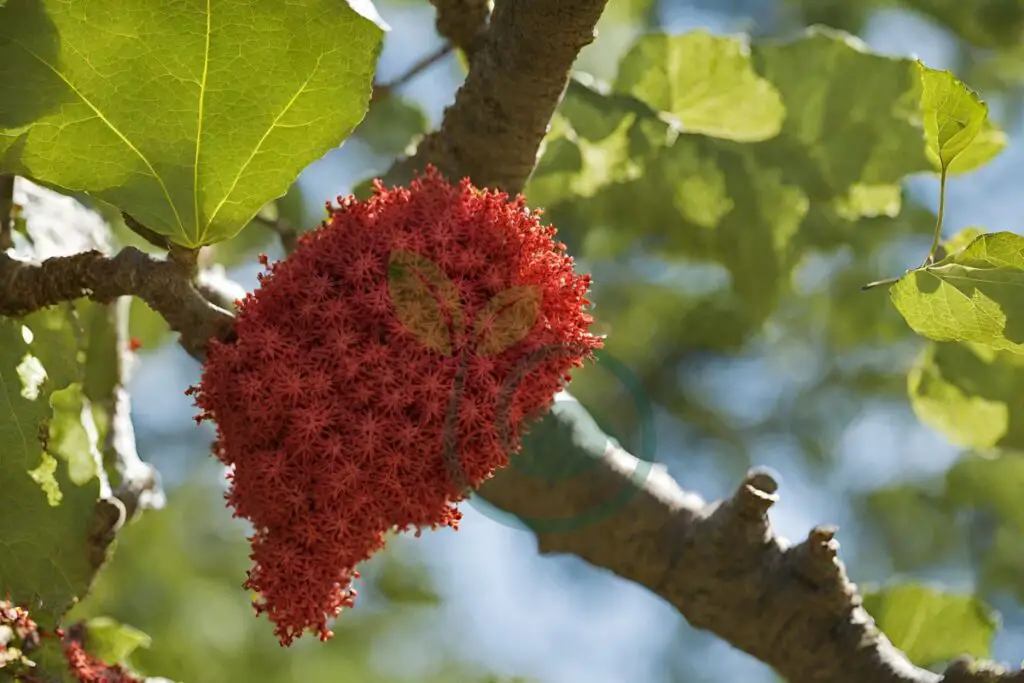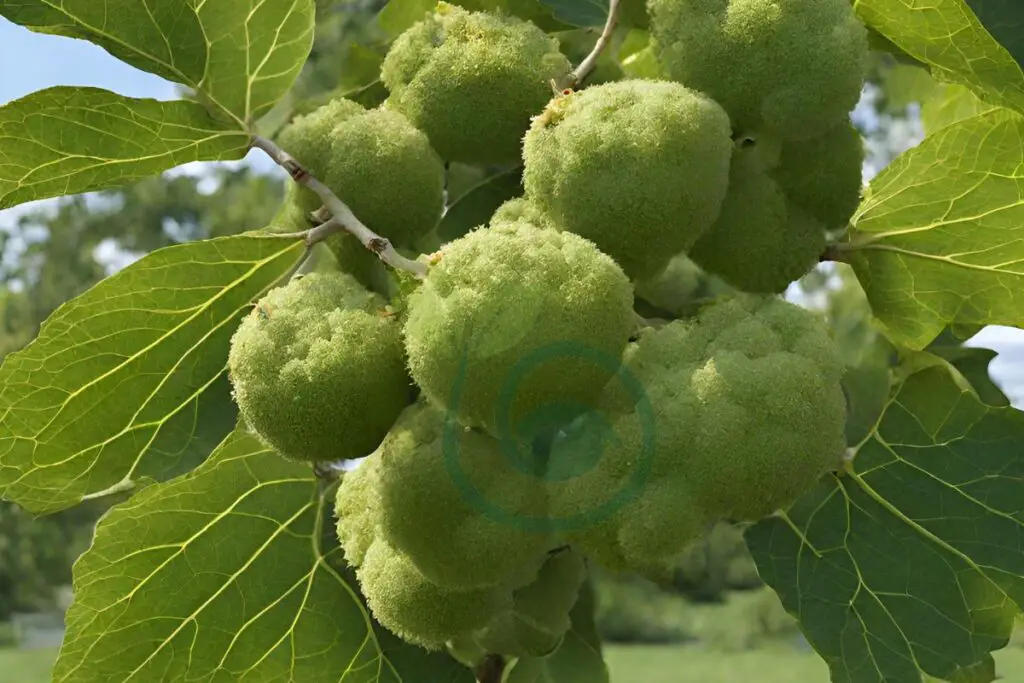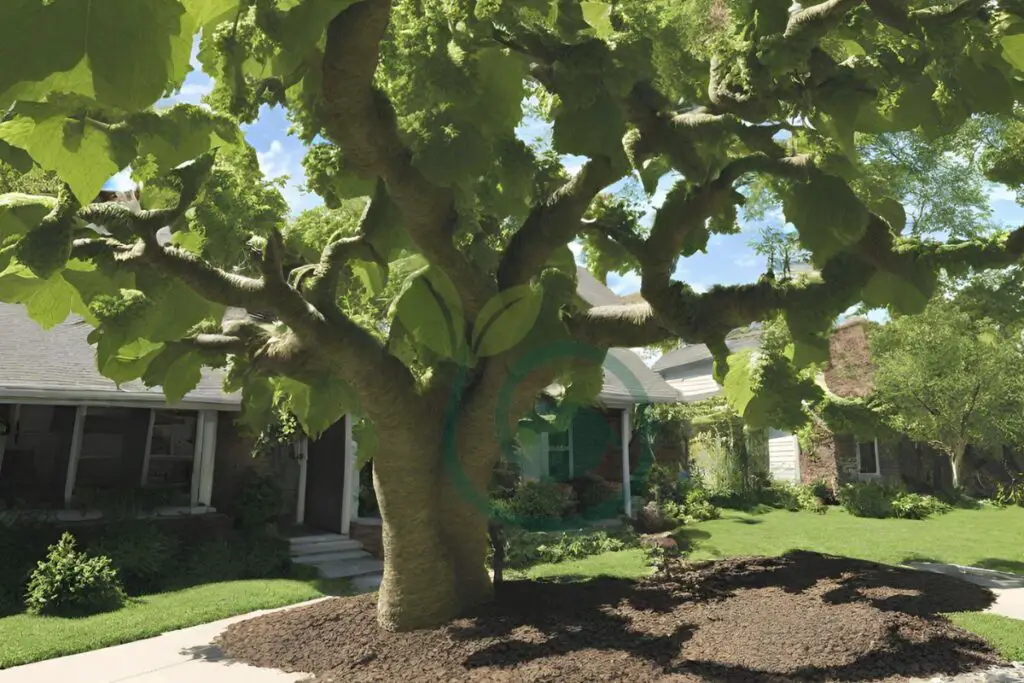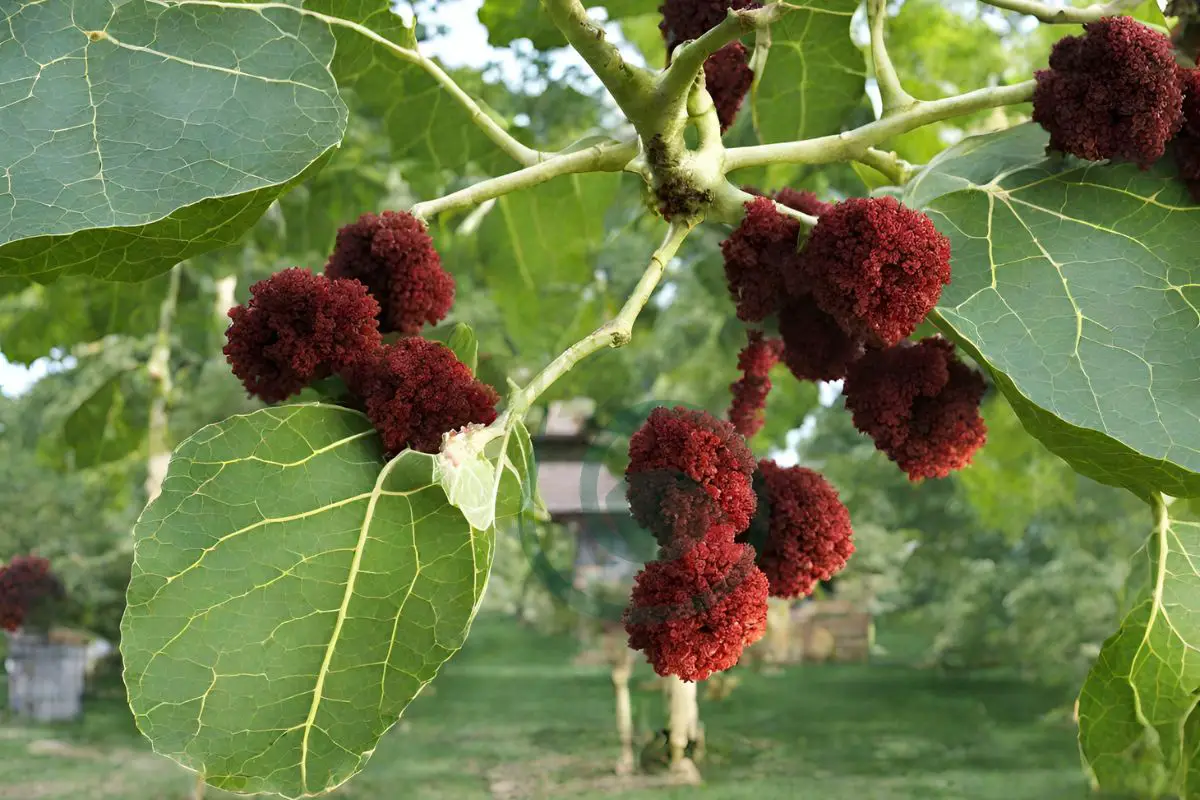Tired of battling that stubborn paper mulberry tree taking over your yard? Ready to say goodbye to the relentless growth and invasive roots? It's time to take charge and reclaim your outdoor space. While removing a paper mulberry tree can be challenging, with the right approach, you can effectively eliminate this persistent plant from your property. In this article, we'll share practical tips on how to get rid of a paper mulberry tree for good. From cutting techniques to root removal strategies, we've got you covered so you can bid farewell to the unwanted green intruder.
Key Takeaways
- Identify the Paper Mulberry: Learn to recognize the distinctive features of a paper mulberry tree to effectively address its removal.
- Choose the Right Removal Method: Select appropriate techniques like cutting, digging, or using herbicides based on the size and location of the tree.
- Prevent Regrowth: Implement measures to prevent new saplings from sprouting, such as regular monitoring and timely removal of any new growth.
- Address Mulberry Suckers: Eliminate mulberry suckers promptly to prevent the tree from spreading and taking root in unwanted areas.
- Follow Expert Advice: Consider expert recommendations and insights on the removal process to ensure a successful and lasting solution.
- Act Promptly: Take action promptly upon identifying a paper mulberry tree to prevent further growth and potential damage.
Understanding Paper Mulberry
Species Overview
The paper mulberry tree, scientifically known as Broussonetia papyrifera, hails from Asia and is recognized for its swift growth rate. This deciduous tree thrives in various environments and bears small, circular fruits that serve as a food source for birds.
Its rapid growth enables the paper mulberry to flourish quickly in different conditions. Birds are attracted to the fruit produced by this plant, aiding in seed dispersal across regions.
Characteristics
Characterized by large leaves with serrated edges, the paper mulberry plant also boasts a smooth light gray bark. Standing tall at heights of up to 40 feet, it forms a wide canopy providing ample shade.
With its lobed leaves and spreading canopy, the paper mulberry tree offers not only aesthetic appeal but also functional benefits within its ecosystem.
Environmental Impacts
While aesthetically pleasing, paper mulberry trees can pose environmental challenges. They often outcompete native plant species, leading to reduced biodiversity in their habitat.
Their dense foliage tends to block sunlight from reaching understory plants and soil below them. The shallow root system of these trees contributes significantly to soil erosion issues.
Recognizing the Threat
Paper mulberry trees, a plant, pose a significant threat due to their invasive nature. These trees, originating in Asia, have spread to various regions worldwide and are considered invasive because they outcompete native plants for resources. The tree's prolific seed production coupled with the ease of dispersal by wind or animals contributes to its rapid spread.

The ability of paper mulberry trees to regenerate from cut stumps makes them particularly challenging to control. Even when cut down, these resilient trees can sprout new growth, perpetuating their presence in an area. This characteristic adds another layer of difficulty when attempting to eradicate them completely.
In addition to being invasive, paper mulberry trees can cause substantial damage to ecosystems. Their aggressive growth habits allow them to quickly overtake an area, displacing native vegetation along the way. This displacement disrupts the balance of local ecosystems by reducing biodiversity and altering habitat structures.
Moreover, the dense shade created by paper mulberry trees inhibits sunlight from reaching the ground below effectively stifling the growth of other plant species that require adequate sunlight for photosynthesis. As a result, areas dominated by paper mulberries may experience a decline in plant diversity and overall ecosystem health.
Methods for Removal
Cut and Leave
Cutting down paper mulberry trees without treating the stumps can result in regrowth. This method is not recommended since it does not effectively eliminate the tree. Leaving cut stumps untreated increases the chances of new shoots emerging, leading to continuous growth.
The "cut and leave" approach may seem like a quick fix, but it often results in more work in the long run. Without proper treatment, paper mulberry trees have a high tendency to regenerate from their stumps, causing persistent issues on your property. It's crucial to consider more effective removal methods to prevent future problems.
Cut and Treat
For a more efficient solution, opt for cutting down paper mulberry trees and immediately treating the stumps. Applying herbicides directly to freshly cut stumps is an effective control method that prevents regrowth. Treating the stumps with herbicides significantly reduces the likelihood of new shoots sprouting from the remaining roots.
When you choose to "cut and treat," you are taking proactive steps towards ensuring that paper mulberry trees do not return. By promptly applying herbicides after cutting down the tree, you disrupt its ability to regenerate, ultimately eliminating any chances of new growth from occurring.
Effortless Removal Techniques
Expert Advice
Seeking advice from professional arborists is crucial when dealing with the removal of a paper mulberry tree. These experts possess the knowledge and experience to evaluate the situation accurately. By assessing factors like tree size, root system, and surrounding environment, they can recommend the most effective methods for removal. Their expertise ensures that the process is not only successful but also safe for both individuals and property.

Arborist forums serve as valuable platforms for gathering insights on how to get rid of a paper mulberry tree effectively. Engaging with experienced arborists in these online communities provides access to a wealth of practical tips and solutions. By sharing experiences and learning from others' successes or failures, individuals can better prepare themselves for tackling the task at hand. The collective wisdom found in these forums can offer innovative approaches that may not be widely known.
Preventing Sapling Growth
Barriers are effective in stopping the growth of paper mulberry trees. Physical barriers like root barriers or underground sheets can contain the tree's roots, preventing them from spreading further. These barriers act as a blockade, restricting the invasive nature of paper mulberry trees and reducing their impact on the surrounding environment.
Chemical preventatives offer another solution to curb paper mulberry sapling growth. Pre-emergent herbicides applied to the soil can stop seed germination, hindering new saplings from sprouting. Selective herbicides target only paper mulberry trees while leaving other plants unharmed, ensuring that desirable vegetation remains intact. Regular application of these chemical preventatives is crucial for effectively managing and controlling the spread of paper mulberry trees.
Physical Barriers
- Root barriers or underground sheets
- Restrict root growth
- Contain tree's invasive nature
Chemical Preventatives
- Pre-emergent herbicides on soil
- Stop seed germination
- Target only paper mulberry trees
Implementing physical barriers such as root blockers or underground sheets around paper mulberry trees can halt their expansion by confining their roots within a specific area. This containment method limits the reach of the tree's roots and prevents new saplings from emerging in unwanted areas. On the other hand, utilizing selective herbicides ensures that only targeted species like paper mulberries are affected while preserving other plants nearby, offering a precise approach to managing unwanted saplings effectively.
- Install physical barriers like root blockers.
- Apply pre-emergent herbicides to prevent seed germination.
- Use selective herbicides exclusively targeting paper mulberries.
- Maintain regular applications for long-term control over sapling growth.
Killing Mulberry Suckers
Efficient ways are essential for successfully eliminating paper mulberry trees. By combining cutting, treating, and preventive measures, you can significantly increase the effectiveness of removal efforts. Being proactive and thorough in your approach will save you time and resources in the long run. For instance, cutting down the tree before it matures can prevent further spread through seeds.
Sucker eradication is a key step in preventing regrowth of paper mulberry trees. Suckers are shoots that sprout from the base of the tree and contribute to its resilience. Regularly removing these suckers by either cutting or pulling them out weakens the tree's ability to recover and grow back. Consistent sucker eradication is crucial for maintaining long-term control over paper mulberry infestations as even a few missed suckers can lead to rapid regrowth.
Effective Control Methods
Mechanical Control
Mechanical control methods involve physically removing paper mulberry trees. This can be done by hand-pulling or digging out young trees. Complete root removal is crucial to prevent regrowth, making this method effective for small-scale infestations or individual trees. When pulling out the tree, ensure you extract the entire root system to avoid any chance of it growing back.

When dealing with paper mulberry trees using mechanical control, consider the size of the tree and its age. Younger trees are easier to uproot compared to mature ones. By manually removing these invasive plants, you eliminate their ability to spread seeds and propagate further in your garden or yard.
Pros
- Environmentally friendly method
- Low cost involved in manual removal
Cons:
- Labor-intensive process
- May not be suitable for large-scale infestations
Chemical Control
Chemical control involves using herbicides specifically designed to target and kill paper mulberry trees effectively. By applying systemic herbicides directly on the foliage or trunk of the tree, the chemicals get absorbed and transported throughout the plant's system down to its roots. Following safety guidelines when handling herbicides is essential as they can be harmful if not used correctly.
Using chemical control methods requires caution due to potential risks associated with herbicide use. Always wear appropriate protective gear like gloves and goggles when applying these chemicals on paper mulberry trees in your garden or landscape.
- Key Information:
- Herbicides should be applied carefully without harming surrounding vegetation.
- Systemic herbicides work by being absorbed into the plant's tissues and then translocated throughout its vascular system.
Insight into Removal Process
Step-by-Step Guide
Removing a paper mulberry tree involves several crucial steps. Firstly, assess the tree's size and location before planning its removal. This initial evaluation helps determine the best approach for cutting down the tree effectively.
Next, when cutting down the paper mulberry tree, ensure to leave a stump approximately 6 inches above ground level. This leftover stump will serve as a base for applying herbicide to prevent any potential regrowth of the tree.
After cutting down the tree and leaving an appropriate stump height, it is essential to immediately apply a suitable herbicide to the freshly cut stump. This step is critical in ensuring that the paper mulberry does not grow back after being removed.
Safety Measures
Safety should be a top priority when removing paper mulberry trees. It is crucial to wear protective clothing such as gloves, goggles, and long sleeves during the removal process. These items help safeguard against potential contact with irritants or harmful substances present in the tree.
Always follow instructions provided on herbicide labels meticulously when applying them to the freshly cut stump of a paper mulberry tree. Adhering strictly to these guidelines ensures safe and effective use of herbicides without posing risks to yourself or others nearby.
Moreover, using proper tools and equipment is vital in minimizing accidents or injuries during the removal process. Ensure that all tools are in good working condition and suitable for cutting down trees safely.
Expert Recommendations
Professional Services
Professional tree removal services are highly recommended for eradicating a paper mulberry tree. Arborists possess the necessary expertise, equipment, and knowledge to handle such trees effectively. They can provide tailored solutions based on specific situations, ensuring efficient and safe removal.
Hiring professionals guarantees a thorough eradication process that minimizes risks and ensures the safety of your property. Their experience in dealing with various tree species, including paper mulberries, makes them well-equipped to tackle any challenges that may arise during the removal process.
Pros:
- Efficient and safe eradication
- Tailored solutions for specific situations
- Minimizes risks associated with tree removal
On the other hand, DIY removal is an option for small-scale infestations of paper mulberry trees. By researching effective methods and following expert advice, homeowners can increase their success rates in removing these invasive trees from their properties.
Cons:
- Requires time and effort
- May not be suitable for large-scale infestations
Regular monitoring after either professional or DIY removal is crucial to prevent regrowth of paper mulberry trees. Implementing maintenance practices such as pruning surrounding vegetation can help deter new growths from emerging.
- Research effective methods
- Follow expert advice
Closing Thoughts
You've now got the lowdown on paper mulberry removal. It's time to roll up your sleeves and kick those pesky trees to the curb! Remember, persistence is key in this battle against invasive plants. Armed with the techniques and insights shared here, you're well-equipped to reclaim your yard from these unwanted guests.
So, what are you waiting for? Get out there and show those paper mulberries who's boss! Your garden will thank you, and you'll enjoy a mulberry-free oasis in no time.
Frequently Asked Questions
How can I identify a Paper Mulberry tree?
Paper Mulberry trees are characterized by their large, lobed leaves with serrated edges and reddish-brown bark. They often have multiple trunks and produce small green fruit clusters. If you observe these features in a tree on your property, it may be a Paper Mulberry.
What are the risks associated with having a Paper Mulberry tree?
Paper Mulberry trees can pose several threats, including aggressive growth that can outcompete native plants, high pollen production causing allergies, and structural damage to buildings due to invasive roots. It's essential to address these risks promptly.
Is removing a Paper Mulberry tree difficult?
Removing a Paper Mulberry tree can be challenging due to its vigorous growth habits and deep root system. However, with the right techniques and tools outlined in our blog post under "Methods for Removal" and "Effortless Removal Techniques," you can effectively get rid of the tree.
Are there natural methods for preventing new saplings from growing?
Yes, there are natural ways to prevent new Paper Mulberry saplings from sprouting. You can use organic mulch or apply herbicides specifically designed to inhibit seed germination. These methods help disrupt the growth cycle of saplings without harming surrounding vegetation.
What expert recommendations are provided for dealing with Paper Mulberry trees?
Our blog post includes expert recommendations on controlling and eliminating Paper Mulberry trees effectively. By following the insights shared under "Expert Recommendations," you'll gain valuable tips from professionals in arboriculture on managing this invasive species sustainably.
Image Source: Paid image from CANVA


